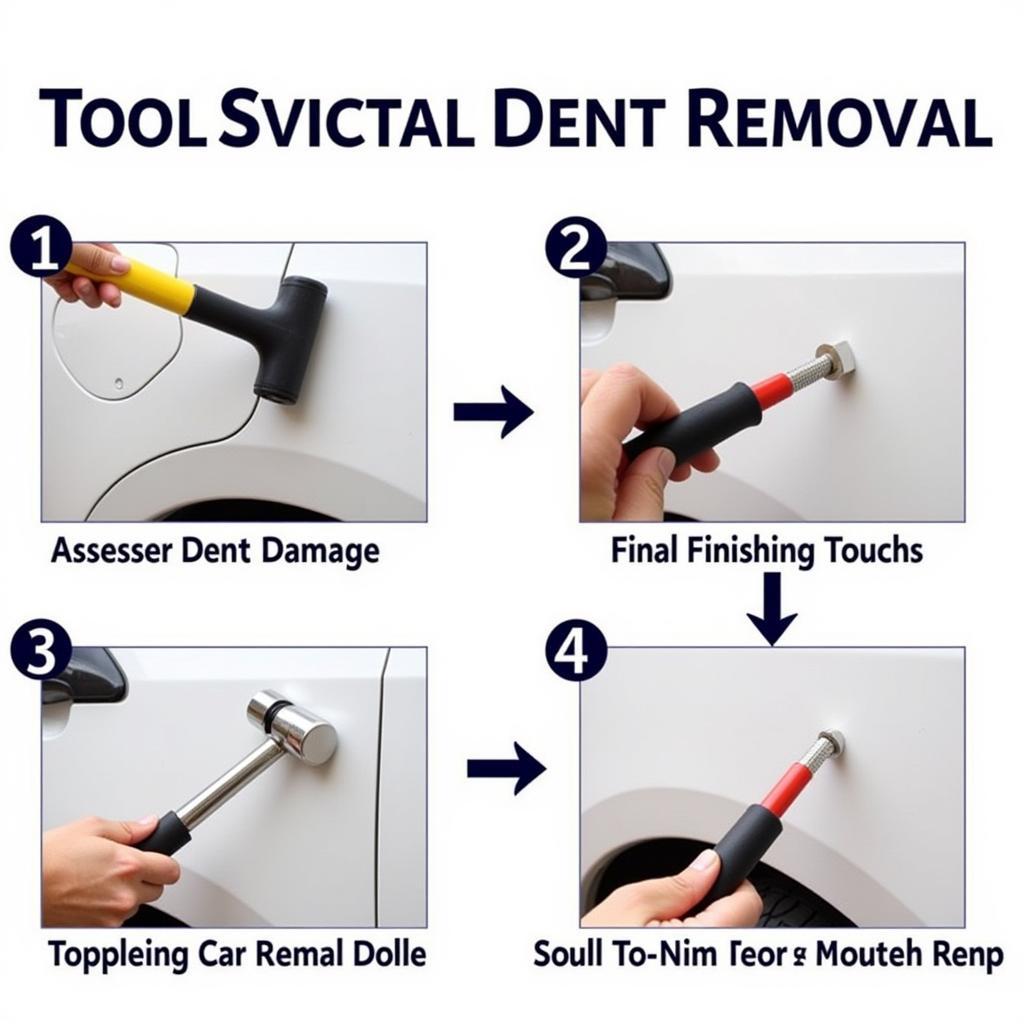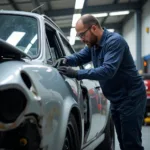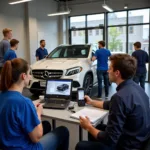Car body repair techniques encompass a wide range of procedures used to restore a vehicle’s exterior to its pre-accident condition. From minor dents and scratches to major collision damage, understanding these techniques is crucial for both car owners and professionals in the automotive industry. This guide will delve into the various methods employed in modern car body repair, offering insights into their application, benefits, and advancements.
Choosing the right car body repair technique depends on the extent of the damage, the materials involved, and the desired outcome. Some repairs may be simple enough for DIY enthusiasts, while others require the expertise of skilled professionals. Let’s explore the spectrum of car body repair techniques, starting with the basics.
Understanding the Basics of Car Body Repair
Before diving into specific techniques, it’s essential to understand the fundamental principles. This includes knowing the different types of damage, the materials used in car body construction (steel, aluminum, composites), and the appropriate tools for each repair process. Understanding these basics sets the foundation for successful car body repairs. You can find reliable car body repair services in various locations, such as car body repair shop maidstone.
The first step in any repair is damage assessment. This involves carefully inspecting the affected area to determine the extent of the damage, the type of material involved, and the best repair approach. Accurate assessment is critical for choosing the appropriate car body repair techniques and ensuring a quality repair.
Exploring Common Car Body Repair Techniques
Several car body repair techniques cater to different types of damage and material. Let’s examine some of the most commonly used methods.
Paintless Dent Repair (PDR)
PDR is a technique used to remove minor dents and dings without the need for repainting. It involves carefully massaging the metal back into its original shape using specialized tools. PDR is a cost-effective and time-saving option for minor dents, preserving the original factory finish. For expert car body repairs, consider checking out services like car body repairs st albans.
Body Filling and Sanding
Body filler is used to fill deeper dents and scratches before painting. The filler is applied to the damaged area, shaped, and then sanded smooth to create a seamless surface. This technique is essential for achieving a flawless finish before applying primer and paint.
Welding and Panel Replacement
For more severe damage, welding may be necessary to repair or replace damaged panels. This involves cutting out the damaged section and welding in a new piece of metal. Panel replacement ensures structural integrity and restores the vehicle’s appearance.
Corrosion Repair
Rust and corrosion can significantly weaken a car’s body. Corrosion repair involves removing the rusted metal, treating the affected area to prevent further rust, and then patching or replacing the damaged section. This is a crucial step in preserving the vehicle’s longevity.
Painting and Finishing
After the repairs are complete, the final step is painting and finishing. This involves applying primer, base coat, and clear coat to achieve a smooth, even finish that matches the original paint color. Proper painting techniques ensure a durable and aesthetically pleasing result. If you’re in Dunmow, you might want to look into car body.repair in dunmow.
“Proper surface preparation is paramount in achieving a flawless paint job,” says John Smith, a veteran auto body technician with over 20 years of experience. “It’s the foundation upon which the entire repair rests.”
Advanced Car Body Repair Techniques
With advancements in automotive technology, car body repair techniques have also evolved. Here are some of the latest developments.
Laser Welding
Laser welding offers greater precision and control, minimizing heat-affected zones and reducing distortion. This technique is particularly useful for welding thin gauge metals and intricate parts.
Plastic Repair
Modern cars increasingly utilize plastic components in their bodywork. Plastic repair techniques involve methods like plastic welding, adhesive bonding, and heat shaping to restore damaged plastic parts. For car body repair needs, consider resources like car body repair ul.
“Laser welding has revolutionized the way we approach certain repairs,” notes Jane Doe, a leading expert in automotive repair technologies. “Its precision and efficiency are unmatched.”
Conclusion
Car body repair techniques play a vital role in restoring a vehicle’s appearance and structural integrity. Understanding these techniques empowers car owners to make informed decisions about repairs and ensures that professionals can deliver high-quality results. From simple dent removal to complex panel replacement, mastering car body repair techniques is essential for maintaining the longevity and value of any vehicle.
FAQs
- What is the most common car body repair technique? PDR (Paintless Dent Repair) is commonly used for minor dents.
- How long does car body repair take? Repair time varies depending on the extent of the damage.
- Can I repair car body damage myself? Minor repairs might be possible, but complex damage requires professional expertise.
- How much does car body repair cost? Costs vary depending on the type and extent of the damage.
- What is the best way to prevent car body damage? Safe driving practices and regular maintenance are key.
- How do I choose a reputable car body repair shop? Look for certified shops with experienced technicians and positive reviews.
- What is the warranty on car body repairs? Warranty periods vary depending on the repair shop and the type of repair.
For further assistance, please contact us via WhatsApp: +1(641)206-8880, or Email: [email protected]. Our customer service team is available 24/7.



